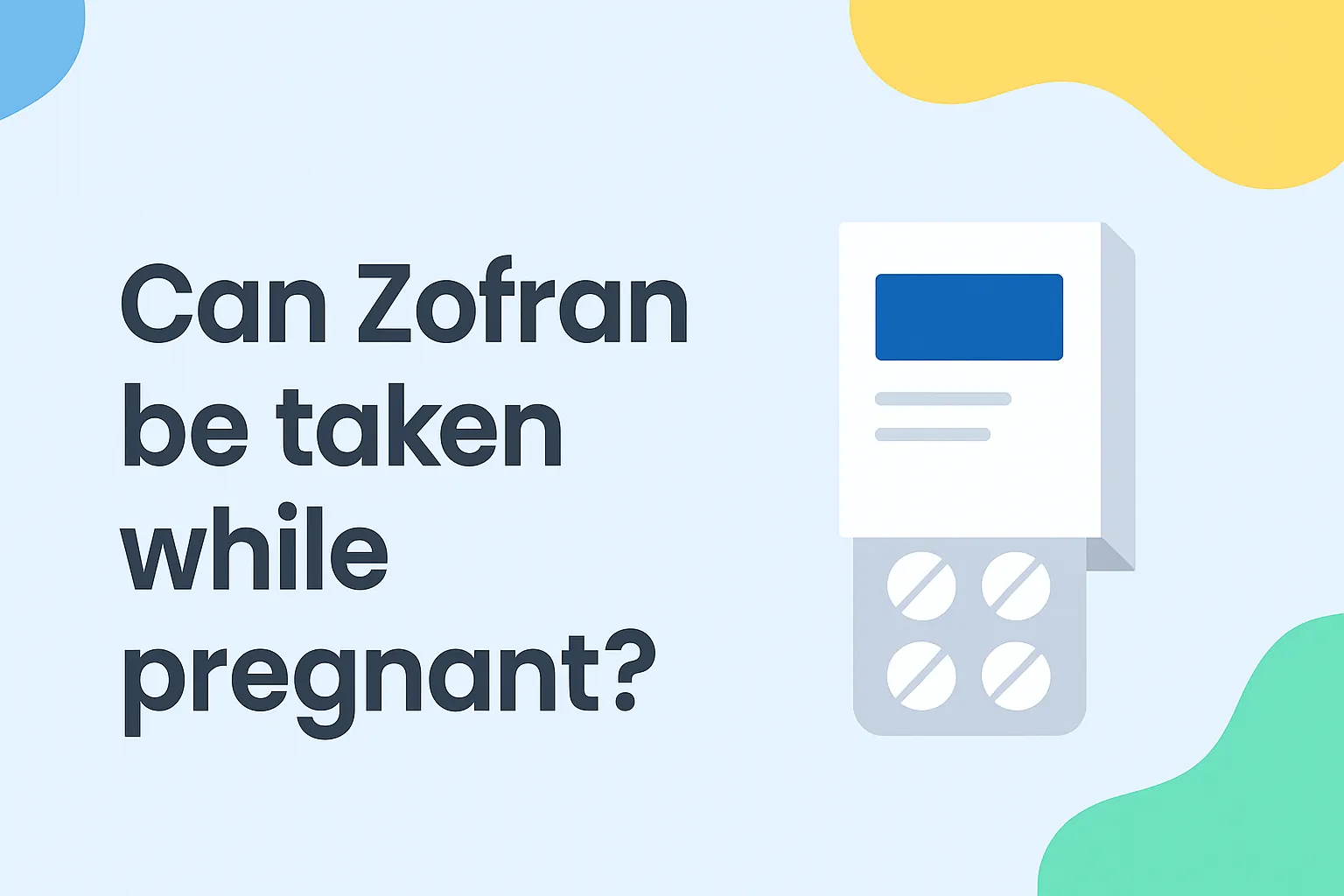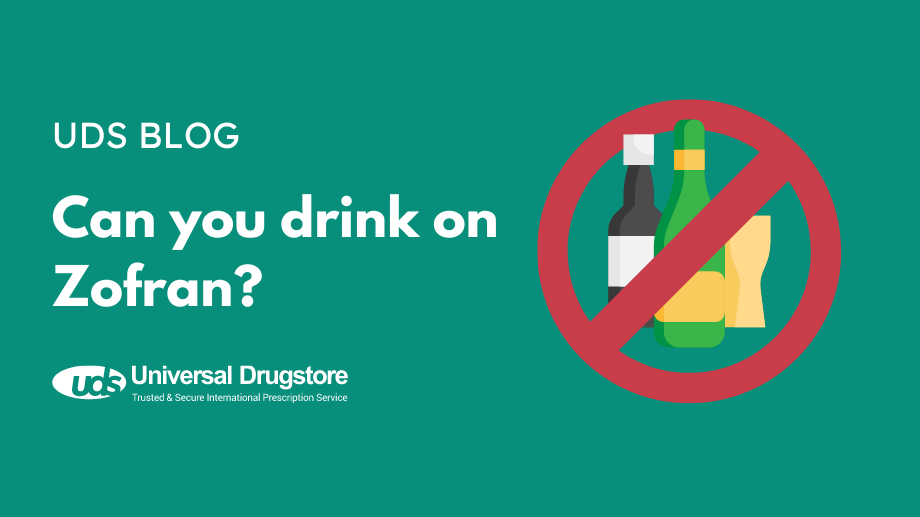Can Zofran be taken while pregnant?

Zofran (ondansetron) is a brand‑name medication used for nausea and vomiting after surgery, chemotherapy, or radiation therapy. It has also been used off‑label during pregnancy to help with nausea and vomiting of pregnancy (NVP), commonly called morning sickness. Severe morning sickness (hyperemesis gravidarum) may require hospitalization.
Zofran is typically reserved for severe NVP when other treatments fail. But is it safe or does it cause birth defects? With each pregnancy there is a 3 %–5 % chance of a birth defect. Most studies, including those in JAMA, did not find an increased risk of birth defects, pregnancy loss, preterm delivery, or low birth weight with ondansetron use. A few cohort studies reported a small (< 1 %) increase in oral clefts (cleft lip/palate) or certain heart defects.
If your healthcare provider prescribes Zofran and you have concerns, you may choose to wait until you are at least 10 weeks pregnant—after this critical period, the risk of birth defects is lower. You can also try other treatments that may be safer during pregnancy.
Alternative treatments for morning sickness
For most pregnant women with mild to moderate morning sickness, home remedies and lifestyle changes can help.:
- Avoid foods or odors that trigger nausea.
- Eat 5–6 small meals throughout the day rather than 3 large ones.
- Stay hydrated by drinking plenty of water.
- Try ginger or peppermint candies.
Medications sometimes used instead of Zofran:
- Vitamin B6 (pyridoxine)
- Antihistamines (doxylamine alone or with vitamin B6)
- Prescription doxylamine/vitamin B6 (Diclegis)
- Phenergan (promethazine)
- Compazine (prochlorperazine)
- Reglan (metoclopramide)
Recommended dosage of Zofran during pregnancy
For pregnancy-related nausea, dosing is typically 4 mg to 8 mg every 8 hours by mouth. Always follow your healthcare provider’s instructions.
For hyperemesis gravidarum requiring hospitalization, intravenous Zofran may be given up to 10 mg every 8 hours.
Zofran FAQs
What is Zofran used for?
- Prevention of nausea and vomiting from chemotherapy or radiation
- Postoperative nausea and vomiting
It can be used in patients as young as 4 years old and is used off‑label for morning sickness.
How does Zofran work?
Zofran is a 5‑HT3 receptor antagonist. It blocks serotonin receptors in the brain’s vomiting center, reducing nausea and vomiting.
What are the side effects of Zofran?
The most common side effects seen in clinical trials include:
- Headache
- Dizziness or lightheadedness
- Drowsiness
- Constipation
- Diarrhea
- Tiredness
Serious side effects requiring immediate medical attention:
- Serious allergic reaction: rash, hives, swelling of face/tongue/lips, trouble breathing, blurred vision, increased heart attack risk
- Serotonin syndrome: increased heart rate, sweating, muscle stiffness/spasms, fever, confusion (risk higher if combined with other serotonergic drugs)
- Abnormal heart rhythm (QT prolongation), especially with IV use or low electrolytes—seek care for chest pain, heart rate changes, shortness of breath, severe dizziness
- Masking of stomach blockage—inform your provider if you aren’t passing gas or having bowel movements
Always seek medical advice for any concerns and report adverse effects to the FDA at www.fda.gov/medwatch or 1‑800‑FDA‑1088.
Are there drug interactions with Zofran?
Zofran may interact with other medications, vitamins, or supplements. Tell your provider about everything you take, including:
- Serotonergic drugs (SSRIs, SNRIs, MAO inhibitors)
- Drugs affecting CYP450 enzymes (carbamazepine, phenytoin)
- Alfentanil, atracurium
- Tramadol
- Chemotherapy agents
- Apomorphine
- Fentanyl
Who should not take Zofran?
Do not take Zofran if you are allergic to ondansetron, its inactive ingredients, or similar drugs (dolasetron, granisetron, palonosetron). Avoid it if you are taking apomorphine, as this can cause severe low blood pressure and loss of consciousness.
What other warnings and precautions are there?
Before starting Zofran, discuss any of these conditions with your provider:
- History or family history of long QT syndrome or QT prolongation
- Congestive heart failure or slow heartbeats
- Phenylketonuria (ODTs contain phenylalanine)
- Liver disease
- Digestive tract blockage
Is Zofran safe while breastfeeding?
Consult your healthcare provider if breastfeeding. Animal studies show Zofran is present in breast milk; monitor the infant for sedation or feeding difficulties if used.
Related Medications
- Kytril (granisetron)
- Aloxi (palonosetron)
- Emend (aprepitant)
- Reglan (metoclopramide)
- Phenergan (promethazine)
Sources
- Ondansetron (Rx). Medscape. Accessed Aug. 12, 2024.
- Zofran. Prescriber’s Digital Reference. Accessed Aug. 12, 2024.
- Ondansetron hydrochloride tablet, film coated. DailyMed. Accessed Aug. 12, 2024.
- MotherToBaby. Ondansetron (Zofran). NIH. Accessed Aug. 12, 2024.
- Kaplan YC, et al. Reprod Toxicol. 2019;86:1‑13. Accessed Aug. 12, 2024.
- Andrade C. J Clin Psychiatry. 2020;81(3):20f13472. Accessed Aug. 12, 2024.
- Suarez EA, et al. Pharmacoepidemiol Drug Saf. 2021;30(2):114‑125. Accessed Aug. 12, 2024.
- Lemon LS, et al. Int J Epidemiol. 2020;49(2):648‑656. Accessed Aug. 12, 2024.
- Kennedy D. Obstetric Medicine. 2016;9(1):28‑33. Accessed Aug. 12, 2024.
- Fejzo MS, et al. Reprod Toxicol. 2016;62:87‑91. Accessed Aug. 12, 2024.
- Einarson AK, et al. BJOG. 2004;111:940‑943. Accessed Aug. 12, 2024.




